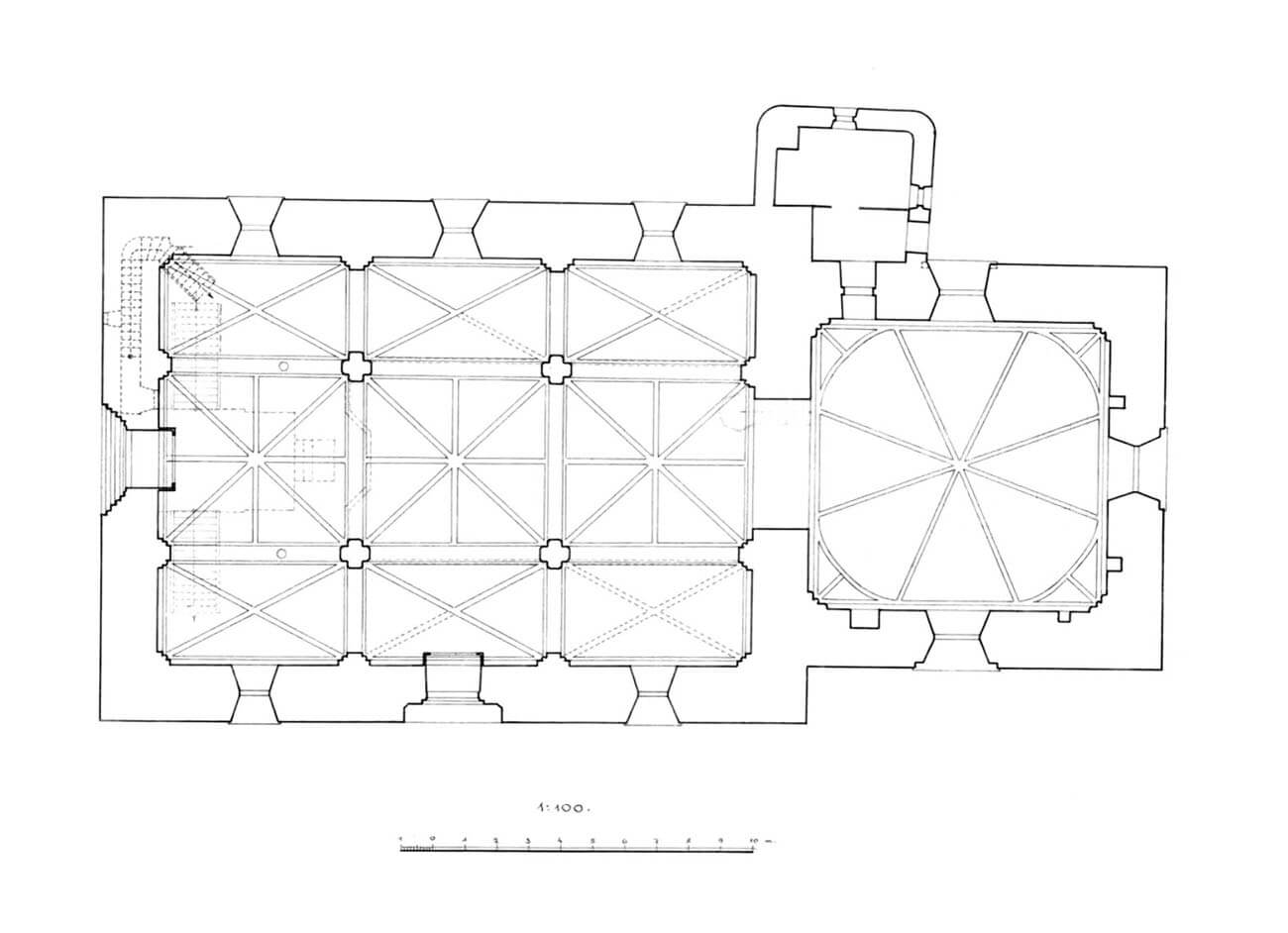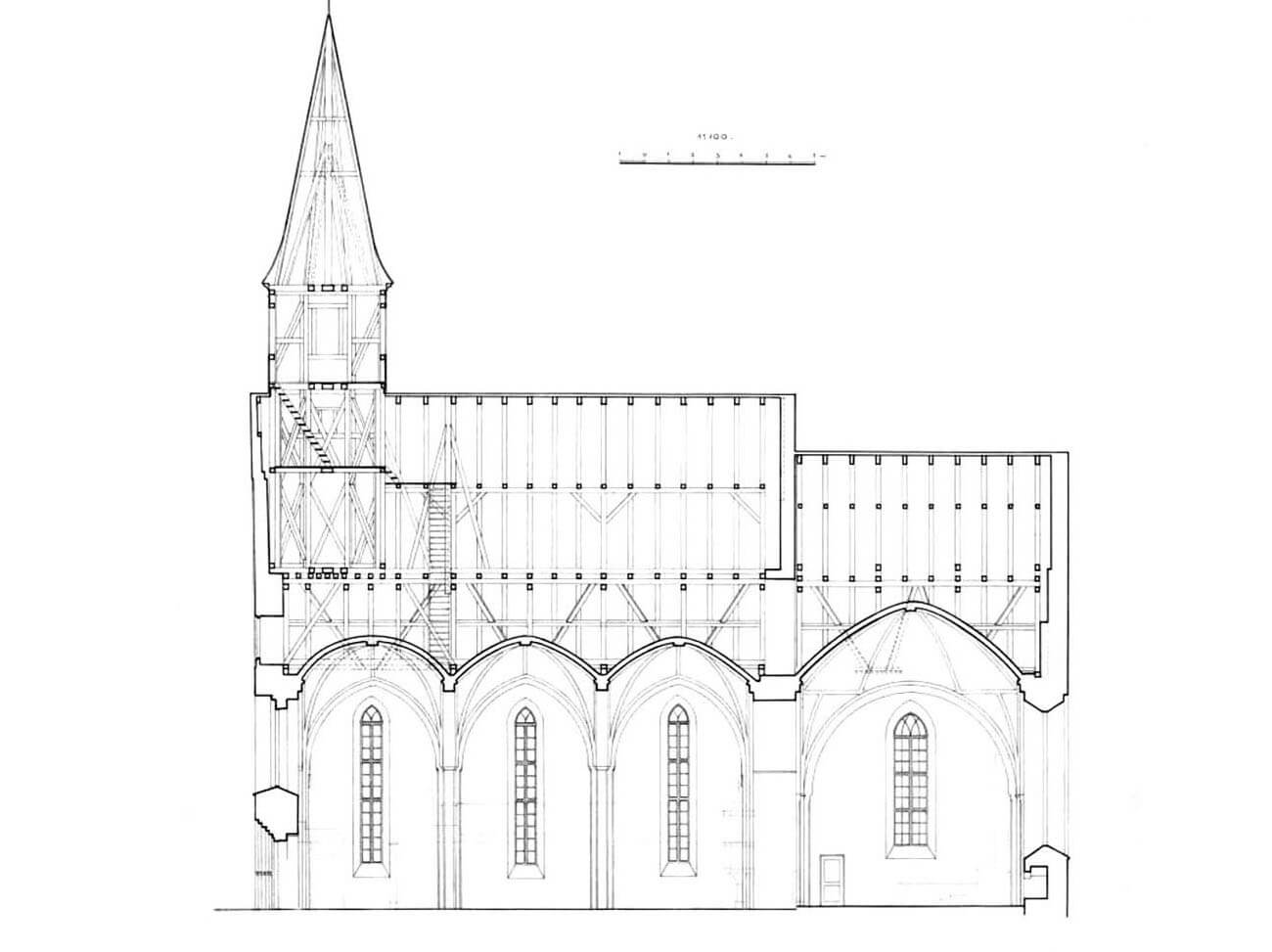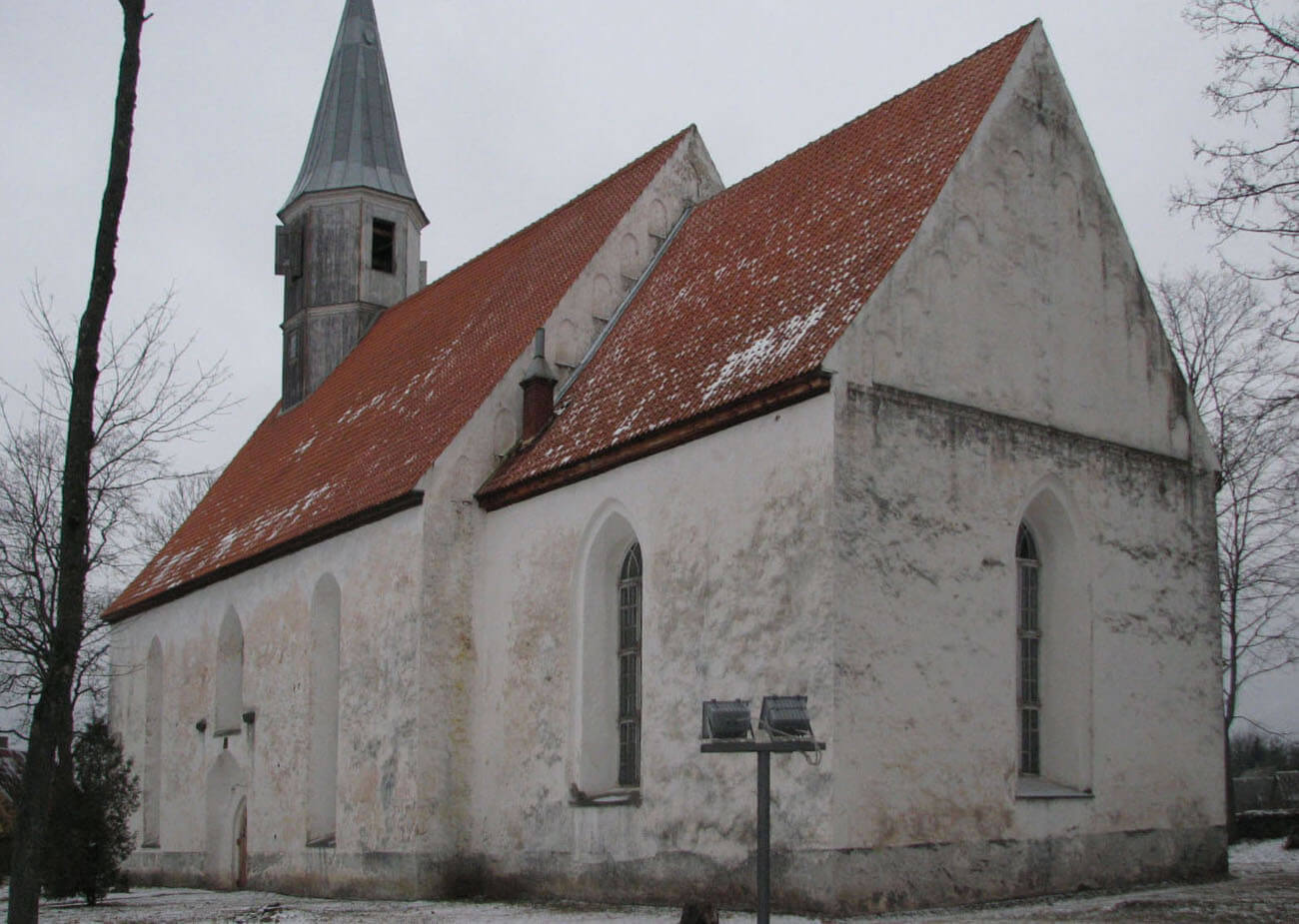History
The church of St. Lawrence in Nõo was built in the middle of the third quarter of the 13th century. First, the vaulted chancel and the walls of the nave were erected, and after a few years the vault of the nave. The church was first recorded in documents in 1319. A document from 1432 indicates that it belonged to the chapter of the cathedral in Tartu at that time.
In the 16th century, in the period of Polish Catholic influences, the church was a pilgrimage center. In the 17th century, it was probably damaged during the Polish-Swedish wars and was renovated before 1683 at the latest. In 1817, a timber turret was added over the nave, and around 1870 the windows of the nave were widened. In the last quarter of the nineteenth century, almost all the church equipment was replaced. Roof truss was repaired throughout the 20th century, the last time in the 1990s. In 1936, the interior of the church was thoroughly renovated.
Architecture
The church obtained an impressive form for a rural sacral building, because it was erected as a rectangular nave with two aisles of hall type, and with a slightly narrower and lower, square chancel on the eastern side. From the outside, the façades of the church were smooth, without buttresses. The thick perimeter walls were pierced with tall, pointed windows, narrow in the aisles, in the chancel with slightly wider jambs, all two-side spalyed. The entrance to the church led from the south, through a portal embedded in the middle bay, and from the west, through a stepped, pointed-arch portal on the axis of the central nave.
The stairs leading to the attic were embedded in the wall thickness of the north-west corner of the nave. Their unusual location led to the assumption that the church had a defensive function and the hard-to-reach room in the attic, above the vaults, was a kind of shelter. More likely, however, it was only a simple access to inspect and repair the roof truss and vaults, especially since passage was not secured with any bar or other blockade to prevent entry for potential attackers. It is also doubtful that a place surrounded by a wooden roof truss, easy to set on fire from the outside, would be safe. The defensive function would only be indicated by placing the entrance at a considerable height of 3.5 meters above the floor, but it could have been due to the lack of space and the need to avoid collisions between the stairs and the window.
An interesting solution was the establishment of a dome-shaped vault over the chancel, on which decorative brick ribs were placed, which would suggest influences from Rhineland and Westphalia. A similar form of vault was also used over the central nave, while the aisles were covered with cross-rib vaults. The vault and walls of the chancel, as well as the vault in the central nave in the Middle Ages were covered with polychrome and monochrome architectural paintings. The nave was divided into aisles by pillars on an isosceles cross plan, with impost cornices supporting pointed, moulded inter-nave arcades.
Current state
The church in Nõo is today one of the most important medieval, village, sacral monuments in southern Estonia and the only one in the region that has almost completely preserved its 13th-century form. The original vaults of the chancel and the nave have survived (damaged in an unknown period in the aisles and then restored), two portals of the church are also medieval, but the southern portal was rebuilt in the late Middle Ages and renovated at the end of the 19th century. The windows of the aisles were widened in the 19th century, while the chancel windows have an original form. A modern addition is the turret on the ridge of the roof.
bibliography:
Alttoa K., Eesti keskaegne kirik redupaigana?, “Õpetatud Eesti Seltsi Aastaraamat”, 2013/1, Tartu 2014.
Eesti arhitektuur 4, Tartumaa, Jõgevamaa, Valgamaa, Võrumaa, Põlvamaa, red. V.Raama, Tallinn 1993.
Randla A., Nõo kiriku siseviimistlus. Uuringu aruanne, Tallinn 2014.
Valk H., On the Origins of Churches and Churchyards of Southern Estonia: The Evidence of Early Grave Finds, „Baltic Journal of Art History”, vol. 13 (2017).




